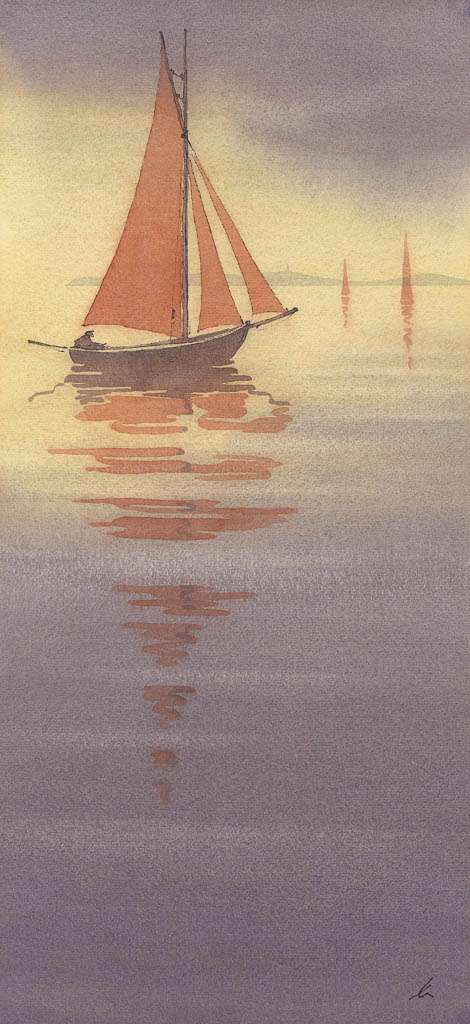Eggert Gustavs – a German painter and graphic artist

| 06.10.1909 | Born in the parsonage of Kloster on the Island of Hiddensee in the Baltic Sea as the youngest son of the "Inselpastor” (island’s pastor) and expert in ancient history and oriental studies Arnold Gustavs and his wife Helene née Lützow |
| 1919 – 1928 | Attended school in Stralsund |
| 1929 – 1930 | Apprenticed as a cabinetmaker in Hamburg |
| 1930 – 1932 | Studied architecture at the Landeskunstschule (University of Fine Arts) in Hamburg |
| 1933 | Turned away from architecture and continued his studies at Bauhaus Berlin. Closer acquaintance with Wassily Kandinsky. After the Bauhaus had been closed, he continued to teach himself to become a painter and graphic artist. |
| 1934 | Began to work as a freelance visual artist and married the dancer and dance educator Irene Tourneau in Neuruppin |
| 1939 | Engineering draftsman |
| 1942 | Drafted into the army (anti-aircraft artillery), wounded, taken prisoner of war |
| 1947 | Released from Soviet captivity |
| 1948 | Recuperated on the Island of Hiddensee, resumed his work as a visual artist in Neuruppin |
| 1951 – 1952 | Built a house for his large family with six children in Neuruppin. Since that time he would spend the summer months working in his artist’s studio of "Haus Gustavs" on the Island of Hiddensee and the winter months in his Neuruppin studio. |
| 13.01.1996 | Eggert Gustavs died in his house in Neuruppin. He found his final resting place at the cemetery in Kloster on the Island of Hiddensee beneath a boulder bearing his monogram he carved himself. |
| 2009 | Exhibition commemorating his 100th birthday in Neuruppin and on the Island of Hiddensee; publication of the book “Eggert Gustavs – Leben und Werk eines Hiddenseer Künstlers;” creation of the nonprofit organization “Eggert Gustavs Gesellschaft e.V.” |
